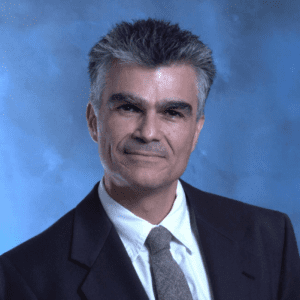When thinking about the general evolution of humans, we primarily compare ourselves to our chimp-like ancestors. But when it comes to the specific evolution of the human brain—which gives us the powers of thought, logic, imagination, empathy, and morality—we must share skull space with the ancient brain equipment that we’ve inherited from our mammalian and reptilian forebears over the past several million years.
Beneath our newer equipment are structures driven by primitive instincts, unconscious impulses, and primordial fears. American physician and neuroscientist Paul MacLean was the first to call this structure the “triune brain,” based on the concept that the reptilian, ancient mammalian, and modern human brains are attempting to coexist and cooperate.
The triune brain structure consists of three parts:
- The reptilian brain, at the core, is responsible for arousal, homeostasis, and reproduction.
- The paleomammalian (“old-mammal”) brain surrounding it is involved with learning, memory, and emotion.
- The neomammalian (“new-mammal”) brain, required for conscious thought and self-awareness, sits atop the other two.
These triune brain parts roughly conform to the common distinction of brainstem, limbic system, and cortex.
MacLean suggested that our triune brain doesn’t necessarily work well because each of the three brains processes information in a distinctive manner and has a unique agenda. For example, the function of the reptilian brain, which drives our instinct and behaviors, retains a good deal of executive control over our actions, while only a small region of the cortex is capable of awareness and articulating its strategies.
This means that multiple levels of the triune brain often vie for dominance simultaneously and conflict with each other, without our conscious awareness—an idea that parallels Sigmund Freud’s conception of the relationship between the conscious and unconscious brain.
That so much neural processing occurs outside of conscious awareness, and that executive decisions at multiple levels can oppose one another, lay the groundwork for considerable inner conflict. To these evolutionary layers are added the complexities of two cerebral hemispheres, a variety of vertical networks integrating the layers of the brain, and the variations of brain organization resulting from gender, vagaries in development, and influences of the cultural environment.
In a visualization of the triune brain suggested by the British cultural philosopher and management consultant Charles Hampden-Turner, the human brain is an anachronistic menagerie, which confronts the psychotherapist with the challenge of treating a human, a horse, and a crocodile, all attempting to inhabit the same body.
Louis Cozolino
Louis Cozolino, PhD, is Professor of Psychology at Pepperdine University and has a private practice in Beverly Hills, CA. He is the author of The Healthy Aging Brain, The Neuroscience of Human Relationships. The Neuroscience of Psychotherapy and The Making of a Therapist. Dr. Cozolino is an expert in neuroscience, social brain, stress and trauma. He has conducted research in the areas of schizophrenia, child abuse, the impact of stress, the biobehavioral sciences and psychotherapy.








